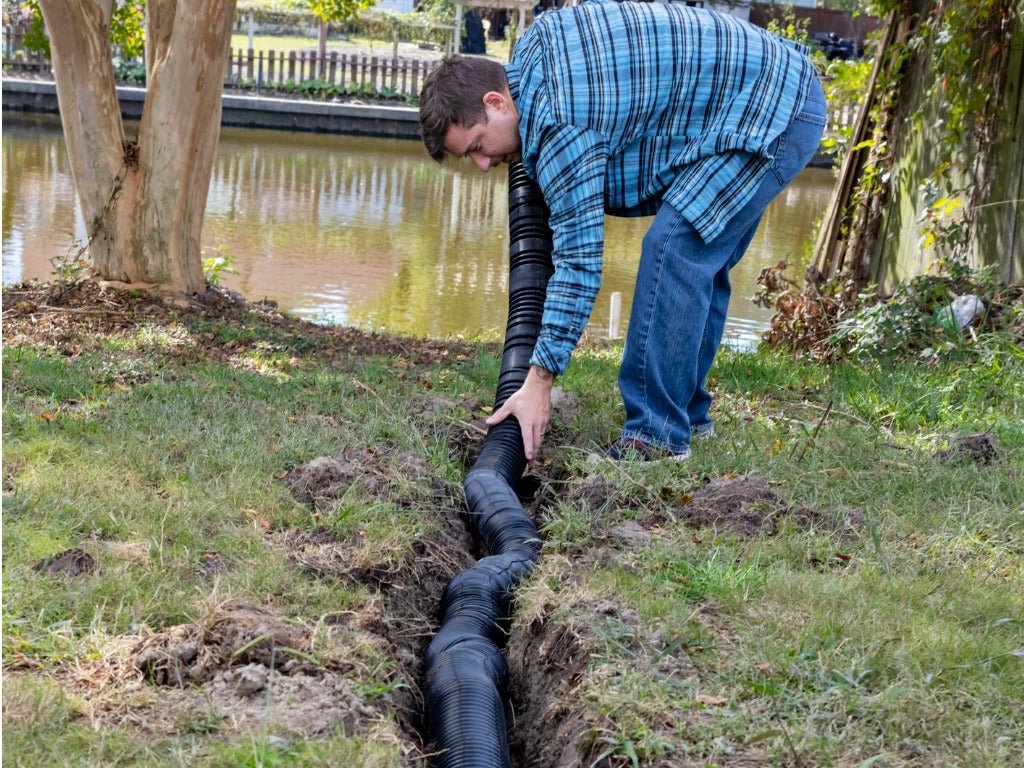
Maintaining Your Yard’s Drainage System Through the Seasons
Table of Contents
ToggleIntroduction to Seasonal Drainage Maintenance
Yard drainage systems are constantly exposed to the elements, undergoing continuous wear and tear as the months pass. Effective maintenance is essential to keep water away from your home’s foundation, prevent soil erosion, and protect your plants. Ignoring minor drainage issues can lead to bigger concerns—mossy patches, foundation cracks, or recurring basement moisture. For certain types of solutions, like dry wells, periodic professional dry well installation helps ensure everything functions optimally and with minimal maintenance in the long run. Preventative action is key, and understanding when and how to perform maintenance ensures the drainage infrastructure works as intended throughout the year. Homeowners who invest effort in keeping drainage efficient often avoid the disruptions and bills that come with emergency repairs after heavy rain or seasonal transitions.
The Role of Drainage Systems in Yard Health
Yard drainage systems serve as your landscape’s invisible guardians, channeling water away from sensitive areas and dispersing excess runoff gently back into the ground. Their primary purpose is to protect your property from the destructive effects of water, whether sudden downpours in spring, slow drizzles in autumn, or thawing snow in winter. Rainwater and melting snow quickly collect in depressions without adequate drainage, leading to soil compaction, root suffocation, and plant disease. Prolonged sogginess also attracts pests such as mosquitoes and encourages fungal growth.
Soil type, topography, and climate influence a yard’s drainage requirements. Sandy soils absorb water quickly, while clay soils hold moisture longer, demanding more robust systems. Sloped lots may use swales or berms, while flat properties benefit from underground piping or dry wells. According to EPA water management guidance, thoughtfully designed drainage supports landscape health and minimizes runoff into public stormwater systems, reducing pollution and helping recharge local aquifers.
Essential Spring Maintenance
Spring signals a revival in the garden, but melting snow, saturated ground, and frequent rain put extra stress on drainage systems. As the ground thaws and plants begin to grow, this is the ideal time for a thorough inspection. Start with a careful walk-through, looking for standing water, washed-out mulch, or soft, eroded soil. Examine gutter downspouts to ensure water is directed well away from the home’s foundation, and clear out winter leaf litter from grates, catch basins, and swales.
French drains, dry wells, and trench systems should be checked for sediment buildup and roots. If your system includes dry wells, gently flush them to dislodge silt. Inspect for broken pipes or crushed gravel that may block water flow. Address landscape grading problems caused by frost heaves. Early spring is also a good time to prune plants near drains and cut back roots that might intrude later in the season. Timely actions in spring set your system up for success and minimize water-related disruptions throughout the wettest months.
Best Practices for Summer
Summer brings intense storms, longer dry spells, and increased yard activity. Drainage systems must flexibly handle both sudden surges and slow evaporation. Inspect surface channels for blockages—summer storms can wash grass clippings, mulch, and debris into swales and catch basins. If water begins to pool where it never has, inspect for newly compacted soil caused by outdoor foot traffic or lawn equipment. Soaker hoses and sprinklers often highlight weak spots in drainage, revealing slow-draining beds and waterlogged patches.
Dedicating time mid-season to check underground systems can catch clogs before they cause flooding. For dry wells, periodic maintenance ensures their storage capacity isn’t compromised by silt or root intrusion. According to the HGTV DIY drainage guide, paying close attention after extreme weather helps prevent minor issues from escalating. Install splash blocks or gravel at downspout outlets to manage runoff and prevent erosion near the foundation. Regular observation during summer makes end-of-season cleanups much simpler.
Preparing for Fall and Autumn Rains
Fall brings heavy leaf drop and increased rain, which can smother drainage surfaces and overload systems. As the leaves fall, clear gutters and drains more frequently—clogged grates and pipes won’t stand up to autumn cloudbursts. Rake leaves from swales and dry creek beds, as organic matter will quickly create blockages if left unchecked. Inspect the landscaping slope, as freeze-thaw cycles from last winter may have affected drainage contours. Look for puddles where there shouldn’t be any and regrade or add topsoil to low spots as necessary.
The crisp weather is also a good time for a structural audit. Inspect for eroded mulch around drain inlets, uprooted plants, or cracked concrete in paved water channels. Before the first frost, disconnect any hoses, shut off irrigation lines, and protect outdoor faucets to minimize water entry into the drainage infrastructure. Replenish gravel or riprap in problem areas, shoring up defenses against deteriorating weather. Proper fall preparation goes a long way in preventing blockages and ice dams as the temperature drops.
Winter Considerations
Winter presents a different set of drainage challenges. Snow accumulation, soil freeze, and thaw cycles put pressure on every part of an outdoor drainage system. Regularly check that surface drains are clear of fallen twigs, snow, and ice—standing snow over grates can quickly turn to slush and freeze solid, obstructing water flow. Compact snow and create channels for overflow to direct meltwater away from the foundation.
Monitor the edges of patios and sidewalks where meltwater often pools before refreezing. In areas susceptible to ice dams, add sand or grit near drains for traction and to encourage slow, steady melting. If possible, avoid using harsh deicing salts near landscape beds as runoff can damage soil health and plant roots. Underground drainage, such as dry wells, may be less active in midwinter, but should be checked before and after major snow events for any visible signs of backups or blockages. Taking a few simple steps during winter can prevent hidden water damage and prepare your system for spring’s thaw.
Professional Inspections and Installations
While homeowners can tackle basic maintenance tasks, scheduling professional inspections is important for long-term functionality, especially for complex systems or after severe events. Experts bring specialized equipment for scoping pipes, assessing grading, and detecting subtle leaks or soil settling. Seasonal service ensures both above-ground features and hidden infrastructure remain in top shape.
When drainage needs exceed the average DIY project, calling a contractor for a professional dry well installation or constructing a new French drain can pay dividends in performance and peace of mind. Pros navigate local codes, utility locates, and best practices to ensure systems perform year-round, whether handling a sudden downpour or steady snowmelt. For new homeowners or those in flood-prone regions, periodic professional evaluations safeguard against future surprises. This level of expertise can be especially valuable when planning proper drainage for yard areas, where pooling water can otherwise harm lawns, gardens, and foundations. Taking a proactive approach often helps protect your investment and keeps outdoor spaces functional and enjoyable.
Sustainable Approaches and Innovations
Innovative techniques and sustainable practices are transforming home drainage. Rain gardens, which harness native plants to absorb and filter runoff, add biodiversity while reducing standing water. Permeable pavers allow water to percolate gently into the soil rather than rushing into storm drains, preventing erosion and pollution. Bioswales planted with hardy grasses and wildflowers slow the flow across sloped properties, naturally improving absorption and natural filtering of debris.
Smart technology, such as soil moisture sensors and programmable irrigation systems, allows for precision water management year-round. Adopting these new strategies, as promoted in EPA gardening resources, helps homeowners balance the immediate needs of drainage with longer-term environmental goals, such as reduced runoff, healthier soils, and improved pollinator habitat. Integrating sustainable methods into your drainage plan benefits your property and community.
Year-Round Proactive Tips
Consistency is the hallmark of truly effective yard drainage maintenance. Start each season with a whole-yard checkup—walk the perimeter after the first major rain and after snowmelt, looking for new wet spots, exposed roots, or washed-out grading. Maintain a regular schedule for removing leaves and debris from gutters, swales, dry wells, and catch basins. In drought-prone regions, ensure watering methods do not contribute to surface runoff or localized flooding.
Throughout the year, prioritize preventative action over crisis response. Address minor pooling and grading issues as they arise. For new plantings, choose species with deep root systems that improve water absorption and bind soil. Routinely check places where runoff tends to collect and adjust landscaping as needed. According to the HGTV guide on seasonal care, documenting observations after storms or changes in yard use makes future maintenance more efficient. Dedicating a bit of time each month to drainage upkeep pays off in a durable, healthy landscape that can stand up to any season’s weather patterns.

Benjamin Ortiz is a digital marketing expert. He currently runs an SEO agency and a survival gear review blog.






